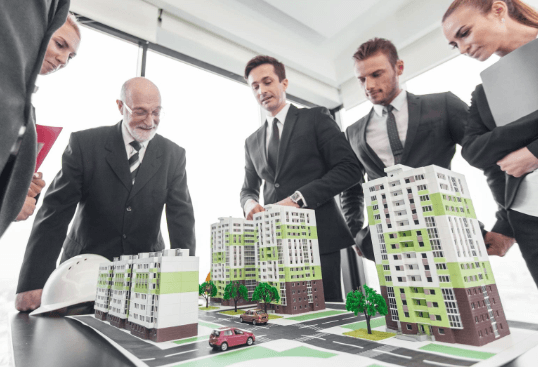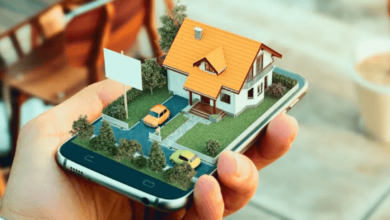
Introduction to Sustainable Real Estate Development
Sustainable real estate development is a comprehensive approach to constructing and managing buildings and properties with a focus on reducing environmental impact, enhancing social equity, and ensuring economic feasibility. As the global demand for sustainable solutions grows, the real estate sector has recognized the need to integrate green practices into its operations. The evolution of sustainable development has been shaped by various environmental movements, technological advancements, and increased awareness of the need for responsible resource use. Today, sustainable real estate is not just a trend but a critical pathway to ensuring a greener future.
Principles of Sustainable Real Estate
Three fundamental ideas—economic viability, social responsibility, and environmental stewardship—are the foundation of sustainable real estate development.These principles guide developers and stakeholders in creating buildings that minimize negative impacts on the environment, enhance the well-being of occupants and surrounding communities, and provide financial returns that justify the investment.
See also: Investing in India’s Growing Economy: Opportunities and Risks
Environmental Stewardship in Real Estate
Environmental stewardship involves actively reducing the carbon footprint of buildings and infrastructure. This can be achieved by using sustainable materials, designing energy-efficient buildings, and incorporating renewable energy sources. Buildings are significant contributors to greenhouse gas emissions, and through sustainable practices, the real estate sector can significantly reduce its environmental impact.
Carbon Footprint Reduction Strategies
Reducing the carbon footprint of real estate projects involves a multi-faceted approach that includes both design and operational strategies. Green building certifications like LEED (Leadership in Energy and Environmental Design) and BREEAM (Building Research Establishment Environmental Assessment Method) provide frameworks for reducing energy consumption, using renewable energy, and incorporating sustainable practices throughout a building’s lifecycle.
Sustainable Materials in Construction
The choice of materials in construction plays a crucial role in the sustainability of a building. Sustainable materials include those that are recycled, locally sourced, or have low environmental impact. For example, using reclaimed wood, recycled steel, and non-toxic paints can reduce a building’s ecological footprint. Additionally, choosing materials with low volatile organic compounds (VOCs) can improve indoor air quality, benefiting occupants’ health.
Energy-Efficient Building Designs
Energy efficiency is a cornerstone of sustainable real estate. By incorporating energy-efficient designs such as passive solar heating, advanced insulation techniques, and smart HVAC (Heating, Ventilation, and Air Conditioning) systems, developers can significantly reduce a building’s energy consumption.One way to minimise the need for artificial lighting and heating is through passive solar architecture, which makes the most of natural light and heat.
Social Responsibility in Real Estate Development
Social responsibility in sustainable real estate development involves creating buildings and spaces that are inclusive, accessible, and beneficial to all community members. This includes providing affordable housing, engaging communities in the development process, and designing buildings that cater to diverse needs.
Affordable Housing and Social Equity
Affordable housing is a critical component of social sustainability in real estate. Sustainable developments should aim to provide mixed-income housing options that cater to different economic segments, ensuring that housing is accessible to all. Government incentives and partnerships with non-profits can facilitate the development of affordable and sustainable housing projects.
Community Engagement and Participatory Planning
Involving the community in the planning and development process is essential for fostering social sustainability. Participatory planning processes ensure that the needs and preferences of local residents are considered, which can lead to developments that are better integrated into their surroundings and more accepted by the community.
Accessibility and Inclusivity in Design
A truly sustainable building is one that is accessible and inclusive, accommodating people of all ages and abilities. This includes adhering to universal design principles and ensuring compliance with the Americans with Disabilities Act (ADA) and other local accessibility standards. Features like ramps, wide doorways, and age-friendly modifications make buildings more inclusive.
Economic Viability of Sustainable Real Estate
Economic viability ensures that sustainable real estate development is financially feasible and provides returns on investment. Sustainable buildings often have higher upfront costs due to the premium materials and technologies used, but these are offset by long-term savings in operational costs and increased property value.
Cost-Benefit Analysis of Sustainable Building Practices
A cost-benefit analysis helps developers weigh the initial costs of sustainable building practices against the potential savings and revenue increases. For example, while energy-efficient systems and sustainable materials might be more expensive upfront, they often lead to significant savings in utility bills and maintenance costs over time. Additionally, properties with sustainable features can command higher rents and sale prices, reflecting a growing market demand for green buildings.
Long-Term Value Creation through Sustainability
Sustainable real estate development contributes to long-term value creation by lowering operating costs, enhancing building resilience, and appealing to eco-conscious tenants. Green buildings often have lower vacancy rates and higher tenant retention, leading to more stable income streams for property owners.
Financing and Investment in Sustainable Real Estate
Financing sustainable real estate projects can involve traditional loans, green bonds, and sustainable loans, as well as private equity and venture capital investments. Green bonds, for example, are specifically designed to raise capital for projects with environmental benefits, making them a popular choice for financing green building projects.
Innovative Technologies in Sustainable Real Estate
The advancement of technology has brought new opportunities for enhancing sustainability in real estate. From green roofs to smart building systems and advanced waste management solutions, these technologies help reduce the environmental impact of buildings and improve their performance.
Green Roofs and Living Walls
Green roofs and living walls are innovative solutions that provide multiple benefits, including improving air quality, reducing urban heat island effects, and enhancing building insulation. These systems require careful design and maintenance but can significantly contribute to a building’s sustainability profile.
Smart Building Technologies
Smart building technologies, such as Internet of Things (IoT) sensors, automated building systems, and predictive maintenance tools, allow for more efficient building management and reduced energy consumption. These technologies enable real-time monitoring and optimization of building systems, improving overall efficiency.
Waste Management and Water Conservation Techniques
Effective waste management and water conservation are vital components of sustainable real estate development. Techniques such as greywater recycling, rainwater harvesting, and on-site composting help reduce a building’s environmental impact and lower utility costs.
Regulatory Framework and Certifications for Sustainable Real Estate
Sustainable real estate development is guided by a mix of international standards, local regulations, and voluntary certifications that set benchmarks for sustainability performance.
International Standards for Green Building
International standards like LEED, BREEAM, and WELL provide frameworks for assessing and certifying the sustainability of buildings. These standards cover various aspects of sustainability, from energy and water efficiency to indoor environmental quality and materials use.
Local Regulations and Compliance
Compliance with local regulations is essential for any real estate development. Zoning laws, building codes, and energy performance standards vary by region but generally promote sustainability by setting minimum requirements for energy efficiency, water conservation, and waste management.
Voluntary Certifications and Their Impact
Voluntary certifications, such as LEED or BREEAM, offer developers an opportunity to go beyond regulatory compliance and demonstrate a commitment to sustainability. These certifications can enhance a building’s marketability and appeal to eco-conscious tenants and investors.
Case Studies of Successful Sustainable Real Estate Projects
Examining real-world examples of sustainable real estate projects can provide valuable insights into best practices and lessons learned.
Residential Real Estate Success Stories
Net-zero homes and green affordable housing projects are leading examples of sustainable residential developments. These projects utilize renewable energy, energy-efficient designs, and sustainable materials to minimize their environmental footprint.
Commercial Real Estate Achievements
Commercial real estate developments, such as eco-friendly office buildings and retail spaces with sustainable designs, demonstrate the viability of green practices in the business sector. These projects often incorporate energy-efficient lighting, HVAC systems, and renewable energy sources.
Mixed-Use Developments Embracing Sustainability
Mixed-use developments, which combine residential, commercial, and recreational spaces, offer unique opportunities for sustainable urban regeneration. These projects can reduce the need for transportation, promote walkability, and integrate green spaces into urban environments.
Challenges in Implementing Sustainable Practices in Real Estate
Despite the benefits, implementing sustainable practices in real estate faces several challenges, including financial barriers, lack of awareness, and regulatory obstacles.
Financial Barriers to Sustainability
The high upfront costs associated with sustainable building practices can be a significant barrier for developers. Limited financing options and uncertainty around returns on investment can also hinder the adoption of green building technologies.
Overcoming Lack of Awareness and Knowledge
Increasing awareness and knowledge about sustainable practices is crucial for their widespread adoption. This can be achieved through education and training programs, industry partnerships, and public awareness campaigns.
Navigating Regulatory Challenges
Regulatory challenges, such as variability in regulations across different regions and the costs associated with compliance, can pose significant hurdles for developers. However, proactive engagement with policymakers and advocating for supportive regulations can help overcome these challenges.
Future Trends in Sustainable Real Estate Development
The future of sustainable real estate development will be shaped by emerging technologies, evolving regulations, and shifting market demands.
Emerging Technologies Driving Sustainability
Technological advancements, such as artificial intelligence, machine learning, advanced materials, and decentralized energy systems, are poised to revolutionize sustainable real estate development.
Anticipated Regulatory Changes and Their Impact
Future regulatory changes, driven by climate policies and stricter building codes, will likely promote more sustainable practices in real estate development. Incentives for green developments are also expected to increase.
Shifts in Market Demands Towards Sustainability
Market demand for sustainable real estate is expected to grow, driven by the preferences of millennials and Gen Z, corporate environmental, social, and governance (ESG) goals, and the “green premium” associated with sustainable properties.
FAQs on Sustainable Real Estate Development
What is sustainable real estate development?
Sustainable real estate development is the practice of creating and managing properties with minimal environmental impact, enhanced social equity, and economic viability.
Why is sustainable real estate important?
It is crucial for reducing the environmental impact of buildings, promoting social equity, and ensuring long-term economic benefits.
What are some examples of sustainable building materials?
Recycled steel, reclaimed wood, low-VOC paints, and local materials are common sustainable building materials.
How can developers finance sustainable projects?
Financing options include green bonds, sustainable loans, private equity, and government incentives.
What are green building certifications?
Certifications like LEED, BREEAM, and WELL assess a building’s sustainability performance and provide benchmarks for best practices.
What challenges do developers face in adopting sustainable practices?
Challenges include high upfront costs, lack of awareness, regulatory hurdles, and limited financing options.
Conclusion: The Path Forward for Sustainable Real Estate
Sustainable real estate development is no longer optional; it is a necessity for the future of the built environment. By adhering to principles of environmental stewardship, social responsibility, and economic viability, developers can create buildings that are not only sustainable but also more valuable and desirable. As the industry continues to evolve, ongoing innovation and commitment to sustainable practices will be key to achieving a greener, more equitable future.




